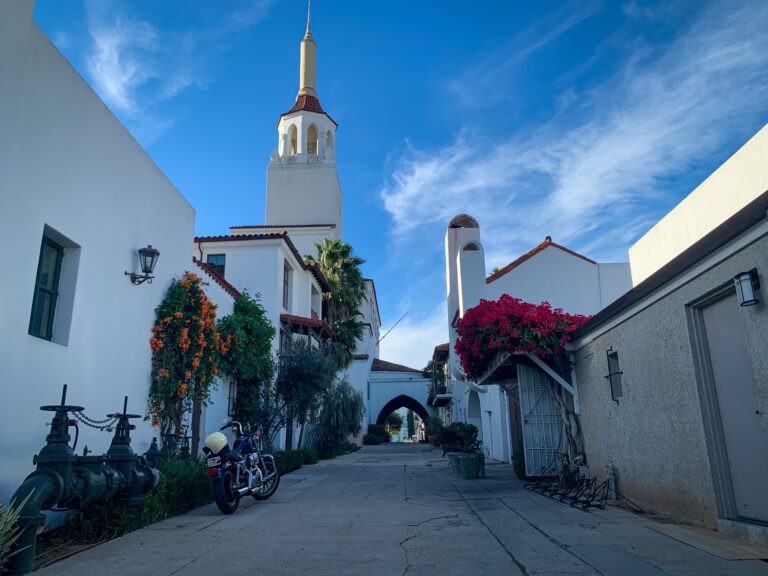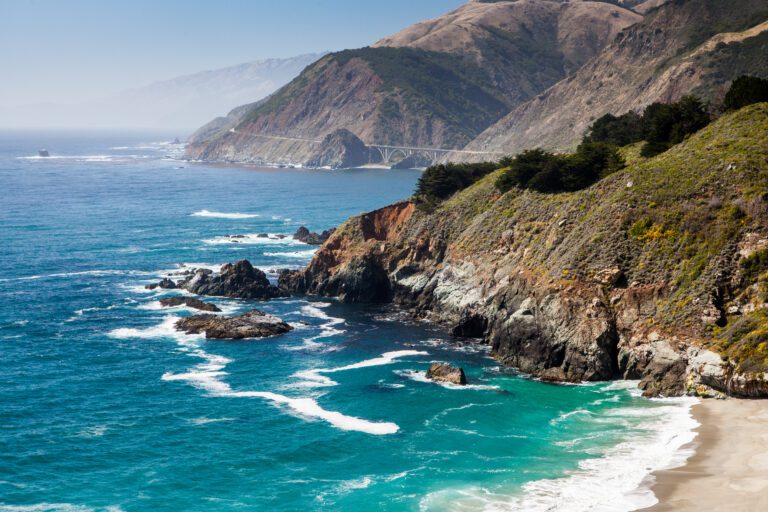The Best Things to Do in Mammoth Lakes in the Summer
Located in the Eastern Sierra near Yosemite National Park, Mammoth Lakes may be most well known as a ski resort town, with the 11,053-foot Mammoth Mountain providing epic downhill terrain. But it’s actually a fantastic year-round destination – especially over the summer.
With a jaw-dropping landscape of towering peaks, beautiful alpine lakes, and vast forests, Mammoth Lakes is an outdoor adventure lover’s playground. The town itself may only be four square miles, but the surrounding area offers fantastic hiking, mountain biking, rock climbing, fishing, and plenty of water play. If you’re looking for things to do in Mammoth Lakes over the summer, you’ve come to the right place.
This guide has everything you need to know about what to do in Mammoth Lakes, along with suggestions on the best places to stay as well as the best places to eat and drink.
I live in Lake Tahoe, just two hours away from Mammoth Lakes, and have visited in every season to enjoy the many outdoor activities available. Below, you’ll find a detailed guide to all the great things to see and do in Mammoth Lakes in the summer.

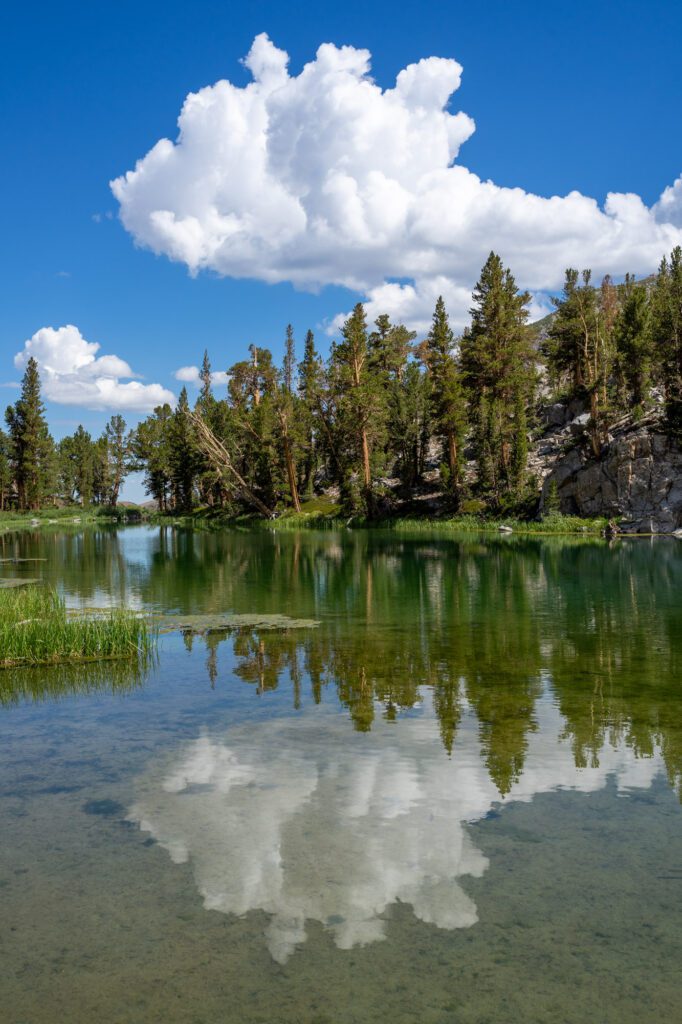
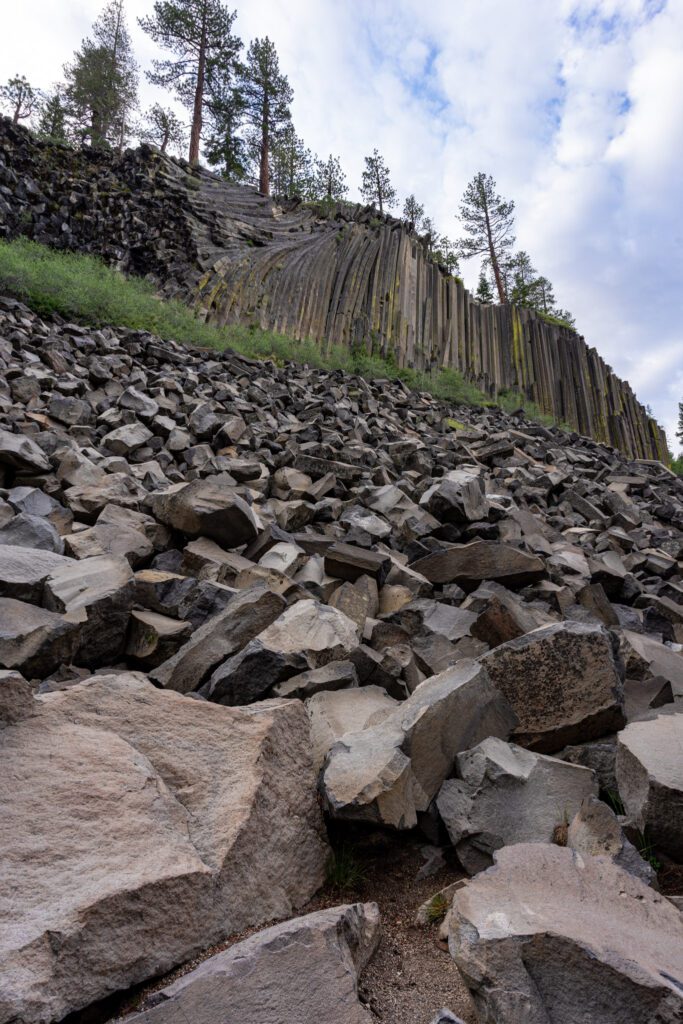
Disclaimer: Some of the links in this post, like hotel and vacation rental links, are affiliate links, meaning at no additional cost to you we make a little bit of money if you click through and book. That being said, we would absolutely never recommend something to you that we don’t stand behind 100%.
Tips for Visiting Mammoth Lakes
But first, some tips to make your trip to Mammoth Lakes a safe and enjoyable one.
- Elevation: Mammoth Lakes is situated at 7,881 feet. All of the hikes are also at elevation, with most starting above 8,000 feet. If you’re coming from sea level, make sure you give yourself time to acclimatize before attempting strenuous physical activity.
- Hiking: Many of the hikes are very popular, so you’ll want to get an early start to secure a parking spot. The shuttle is an option but can add distance to your hike. Wear sturdy shoes with good support and traction. Hiking poles can be helpful for certain hikes. You may want to wear or bring a swimsuit for many of the hikes, as you will often pass by at least one lake, and often several.
- Weather: It can get hot in the summer, even at high elevations. Make sure you wear sun protection, including a hat and sunscreen. Bring and drink plenty of water (and always filter water otherwise). Bring layers. Afternoon thunderstorms are common over the summer, so you’ll want to bring a rain jacket if out, and avoid being in exposed areas during those times.
- Bugs: Despite the high elevation, mosquitos can be a problem in the area, especially after snowmelt or following rain, and around bodies of water, of which there are plenty in the area. It’s better to bring repellent than to wish that you did.
- Bears: Black bears live in the area, though they are more likely to be afraid of you. You should never leave any scented items (food, and even toiletries) in your car or tent. Always put scented items in bear boxes when camping, and always lock your car. Bears can break into a car, but they’re not so great at getting back out (and will wreck your car trying to do so!).
- Cell reception: Other than in the town of Mammoth Lakes itself, cell phone reception can be very spotty to nonexistent. It’s best to download offline maps (for hiking trails or otherwise) onto your phone ahead of time.
- Fire: Fire season is increasingly becoming a problem in the area. Check conditions ahead of time and be aware that fires could impact your trip. Always check for and respect any fire bans that are in place.
- Road conditions: Road closures should be minimal over the summer, though they can occur. Check the Caltrans website for the latest road conditions along 395. If you’re driving from Reno/Tahoe, you can check the NDOT website for the Nevada portions of your trip.
The Best Things to Do in Mammoth Lakes in the Summer
If you love the outdoors, you will be spoiled for choice here, as there are just so many things to do in Mammoth Lakes. Here are my recommendations for the best Mammoth summer activities.
Tackle One of Mammoth’s Many Hikes
With more than 300 miles of trails in the area, which covers portions of the Ansel Adams and John Muir Wilderness, and the Pacific Crest Trail, hiking is one of the best things to do over the summer at Mammoth Lakes.
Most trails offer epic views, along with one (or a few) beautiful lakes along the way. It was tough to pick, but here are some of my favorite hikes in Mammoth Lakes.
Crystal Lake

- Length: 3 miles
- Elevation Gain: 800 feet
- Trail Type: Out and Back
- Difficulty: Easy / Moderate
- Trailhead Location (near Lake George)
This short and easy hike (though rated moderate for the elevation) is a great introduction to hiking in the Mammoth Basin. It’s shaded most of the way, offers fantastic views, and leads to a beautiful lake below an epic crag. It’s a popular trail though, so expect to see others along the way.
From the trailhead, a gentle slope turns quickly into a series of switchbacks, before leveling out for a bit before another set of switchbacks. You’ll see Crystal Crag ahead of you, but don’t forget to look back at Lake George, Lake Mary, and several other lakes in the Lakes Basin. The trail forks at 1.3 miles.
Bear left to continue on to Crystal Lake. You’ll soon top out at 9,730 feet before descending around 120 feet to the outlet of Crystal Lake. There are trails leading off to the left and right. Head left for a gentler trail that leads to several beaches and easy access to the crystal clear water. Head right for steeper boulders and to get to the cliffs area where you can cliff jump when the lake is full.
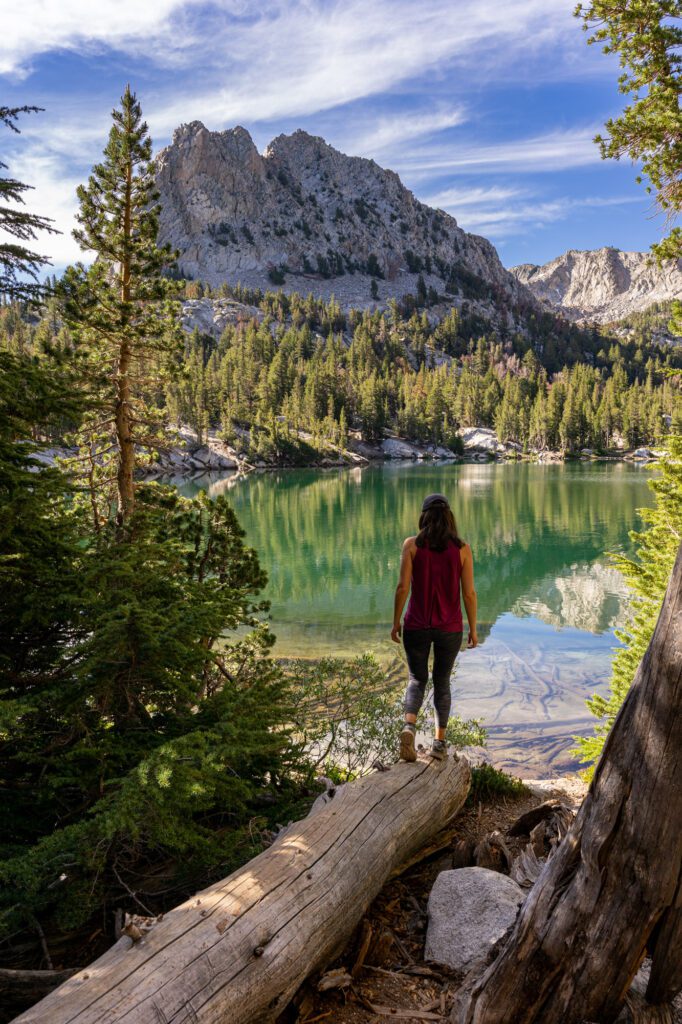
The 13-acre lake is home to brook and rainbow trout along with a golden trout hybrid, making it a popular lake for adventurous anglers. The 10,364-foot Crystal Crag is also home to a series of alpine, sport, and trad climbing routes.
There’s also an option to turn this into a longer trek. Head back to the fork and take the other trail, which will take you up to Mammoth Crest with another 2 miles and 700 feet in elevation gain. At the top, you’ll be rewarded with a colorful volcanic landscape and sweeping vistas of the Mammoth Lakes Basin, the Minarets, Mount Ritter, and Banner Peak. This can also be done as the Mammoth Crest Loop with Duck Pass and Duck Lake.
Find more trail information and recent trail reports here.
Duck Pass
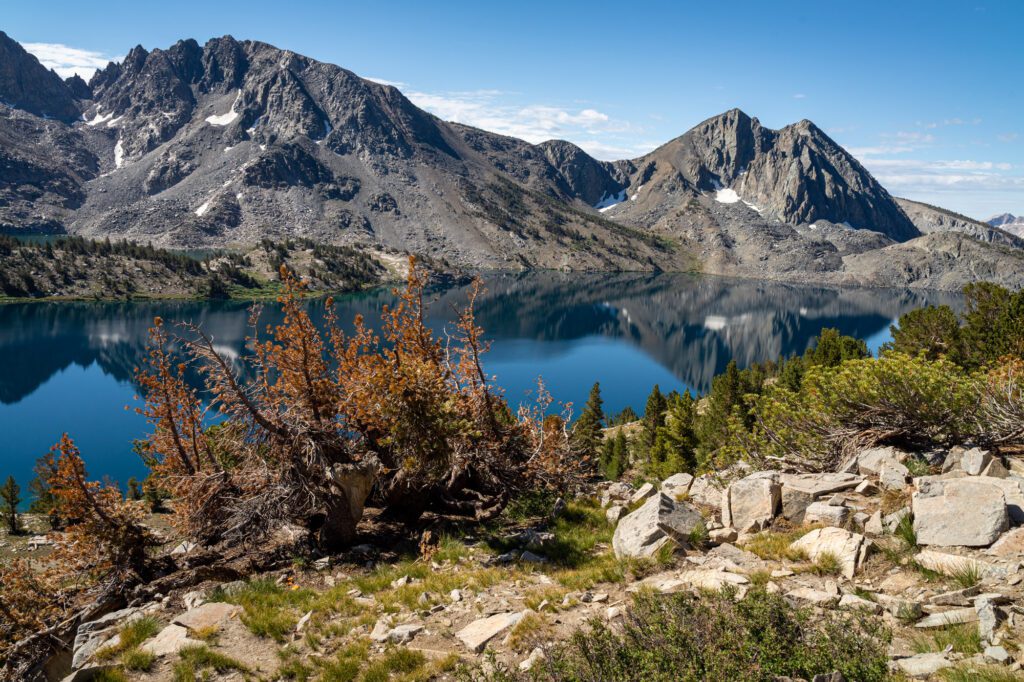
- Length: 10 miles
- Elevation Gain: 1,700 feet
- Trail Type: Out and back
- Difficulty: Moderate / Difficult
- Trailhead Location (at the Coldwater Campground)
This moderately difficult 10-mile out and back trail is one of the best hikes in the area, and also very popular.
You’ll pass by several beautiful alpine lakes and enjoy stunning views of the Eastern Sierra Nevadas along the way. Leave yourself plenty of time if you want to relax at the various lakes along the way.
You’re starting out at 9,100 feet and topping out at nearly 11,000 feet, so make sure you’re acclimated (and expect it to feel tougher than it should). You’ll also want to start the hike early, as the pass is fully exposed by mid morning over the summer.
The trailhead starts from the Coldwater Campground and begins climbing steadily right away. Less than a mile in, and 500 feet up, is a spur trail to the aptly named Arrowhead Lake. The trail levels out a bit, and you’ll pass Skelton Lake in half a mile.
Continue around Skelton Lake, and then climb another mile and 400 feet to the beautiful turquoise waters of Barney Lake. After a creek crossing and the small Red Lake, you’ll reach the toughest part of the hike. You have another 600 feet to go before you reach Duck Pass, and the slope is steep and talus-covered.
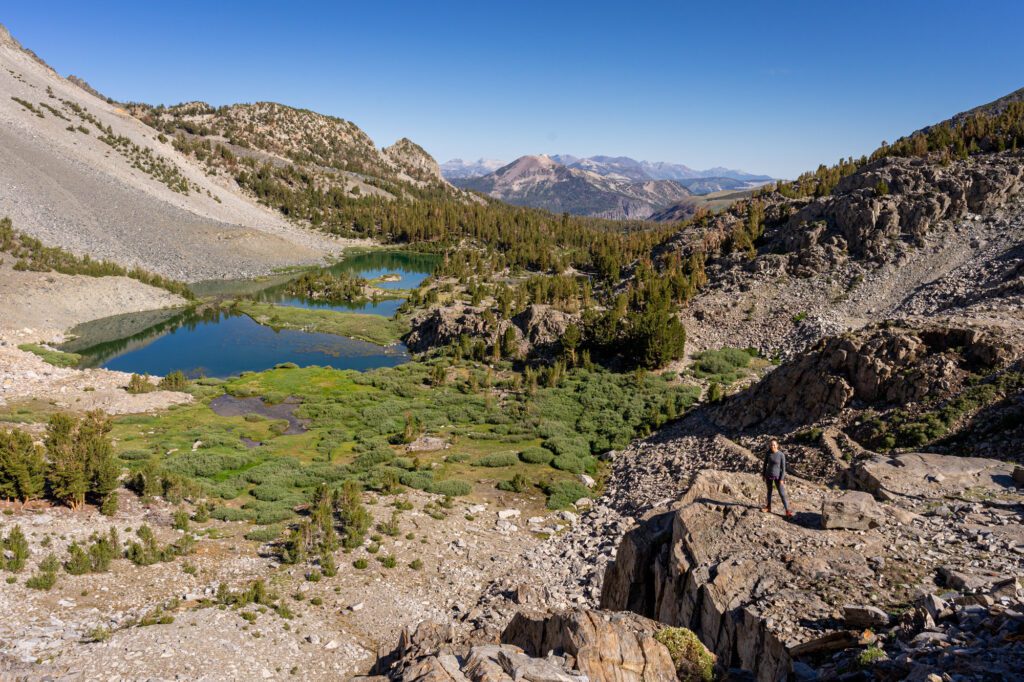
Take a few breaks as you go up and don’t forget to look back over and enjoy fantastic views of Barney Lake. Soon, you’ll top out at Duck Pass, at 10,814 feet.

It’s a 300 drop and about a mile more to reach Duck Lake, one of the largest natural lakes in the area, and stunning with its deep blue waters. You can continue another half mile to nearby Pika Lake.
For a more detailed description of hiking the Duck Pass Trail, check out this review here.
Sherwin Lakes

- Length: 4.5 miles
- Elevation Gain: 850
- Trail Type: Out and Back
- Difficulty: Moderate
- Trailhead Location
This easy to moderate hike takes you to a series of five pretty lakes. Due to its relatively lower elevation (only 7,800 feet!), this trail is also a good option in the spring and early summer. It’s also less crowded than some of the other hikes in the area, though expect to see locals and their dogs along the trail and at the lakes.
Find the trailhead at the end of the Sherwin Creek Road. Start along a dirt path through shrubs. Once you cross a wooden bridge over Sherwin Creek, you’ll start climbing through a forest of pine and fir before a series of switchbacks up a moraine. As you head up, the trees thin out, the views open up, and you can see Mammoth Lakes and Long Valley.
The trail flattens out for the last quarter mile, and you’ll soon first reach the lower of the two bigger Sherwin Lakes. Along the south and west side of the lake are groves of aspens that are colorful in the fall. You can scramble to the west of the first lake to find the second large Sherwin Lake.
To find the three smaller lakes, go downstream from the upper lakes. Look for trout leaping out of the waters. The lakes are also popular spots for fishing.
You can extend the hike by another 3 miles and 1,000 feet of elevation gain by continuing on to Valentine Lake at the very end of Sherwin Canyon. It’s within the John Muir Wilderness so if you plan on camping at Valentine Lake, you’ll need a wilderness permit.
Find more trail information and recent trail reports here.
Shadow Lake
- Length: 8 miles
- Elevation Gain: 1,050 feet
- Trail Type: Out and Back
- Difficulty: Moderate
- Trailhead Location (Agnew Meadows)
One of the jewels of the Sierra, beautiful Shadow Lake sits below the majestic peaks of the Ritter Range. Enjoy river, canyon, and forest views, along with ancient and gnarled juniper trees before you reach a waterfall and Shadow Lake. It’s one of the most popular hikes near the Devils Postpile area, and for good reason.
The trailhead starts at Agnew Meadows. In the summer, that means taking the shuttle in, which adds 0.2 miles to the trail. Look for signs for the Shadow Lake/River Trail. Enjoy a gentle stroll to start. Look for wildflowers around Agnew Meadows in the summer.
You’ll drop down around 300 feet to the San Joaquin River and follow the River Trail, then pass by Olaine Lake around 2 miles in. At the junction just afterwards, take a left for Shadow Lake.
After you cross the bridge spanning the San Joaquin, the climbing starts, and it’s a series of shade-less switchbacks and stone steps 750 feet up the river gorge. Stop to enjoy views of the canyon and the gnarled junipers alongside the trail as you go up.
You’ll also enjoy views of the Shadow Creek Falls for the last half mile of the ascent, with Shadow Lake shortly after that at 8,737 feet. Take some time to enjoy the epic views. The trail levels out and continues around Shadow Lake until it connects with the John Muir Trail. Head back or continue on another 2.5 miles and 600 feet to Ediza Lake.
Find more trail information and recent trail reports here.
Head to Rainbow Falls and Devils Postpile

Formed by volcanic forces 100,000 years ago, Devils Postpile National Monument is a geologic wonder of hexagonal basalt columns that reach over 60 feet tall, while the 101-foot Rainbow Falls is the highest falls on the Middle fork of the San Joaquin River and known for its namesake rainbows.
Both wonders, which are two of the best things to see in Mammoth Lakes, can be reached via an easy hike connecting the two attractions.
Unless you’re staying at the Reds Meadow Resort, the Devils Postpile Campground or one of the other campgrounds in Reds Meadow Valley (Agnew Meadows, Upper Soda Springs, Pumice Flat, Minaret Falls, and Reds Meadow, which are all FCFS campgrounds), have proof of physical handicap (since the shuttle is not ADA accessible), have a cartop boat or inflated float tube, transporting livestock or game, or are arriving before 7:00 am or after 7:00 pm, you must take a paid shuttle bus to access Reds Meadow/Devils Postpile.
If you want to avoid the shuttle and park at the trailhead, you best bet is to arrive before 7am (which is what we did).
Even if you are permitted to drive in, you must still pay the transportation fee. The fee for the shuttle is $15 for adults and $7 for children aged 3 to 15. The shuttle runs from the Mammoth Mountain Adventure Center. Purchase tickets at the Adventure Center or directly from the bus driver as you board.
The Devils Postpile National Monument is only open over the summer. The opening dates are weather dependent, but typically from mid June to mid October. The shuttle typically runs through mid September.
Devils Postpile and Rainbow Falls
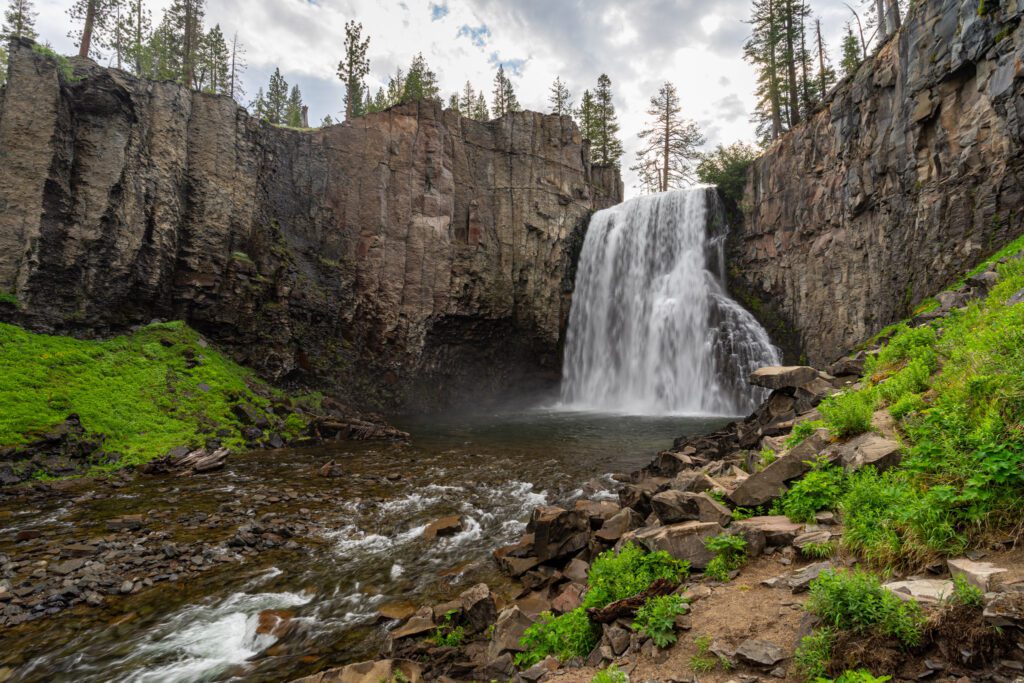
- Length: 3-5 miles
- Elevation Gain: 500 feet
- Trail Type: Out and Back
- Difficulty: Easy
- Trailhead Location: Devils Postpile Ranger Station or Rainbow Falls Trailhead near Red Meadows Resort
It’s an easy hike from the Devils Postpile Ranger Station to the columns. Take the short but steep trail up to get a better view of the unusual formations from above. Afterwards, continue for 2 more miles to reach the 101-foot Rainbow Falls.
Time your visit for late morning or midday for the best chance of seeing the namesake rainbows. There are two overlooks from above the falls, but you can also hike down to the base of the falls to get a different perspective.
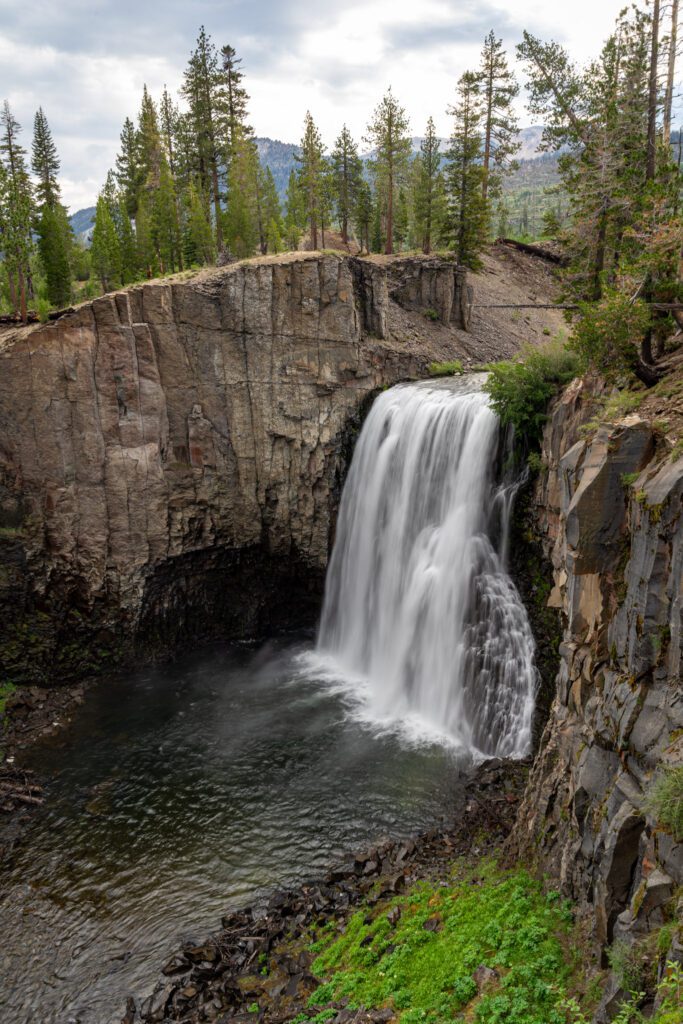
You can also continue another half mile along the trail to another waterfall, the much smaller Lower Falls. Return the way you came to the ranger station to board the shuttle bus back. Alternatively, you can take the half mile trail to the Rainbow Falls Trailhead near the Red Meadows Resort, where there is another shuttle bus. You can also start the hike from here instead of the ranger station.
Find more trail information and recent trail reports here.
Get out on the Water
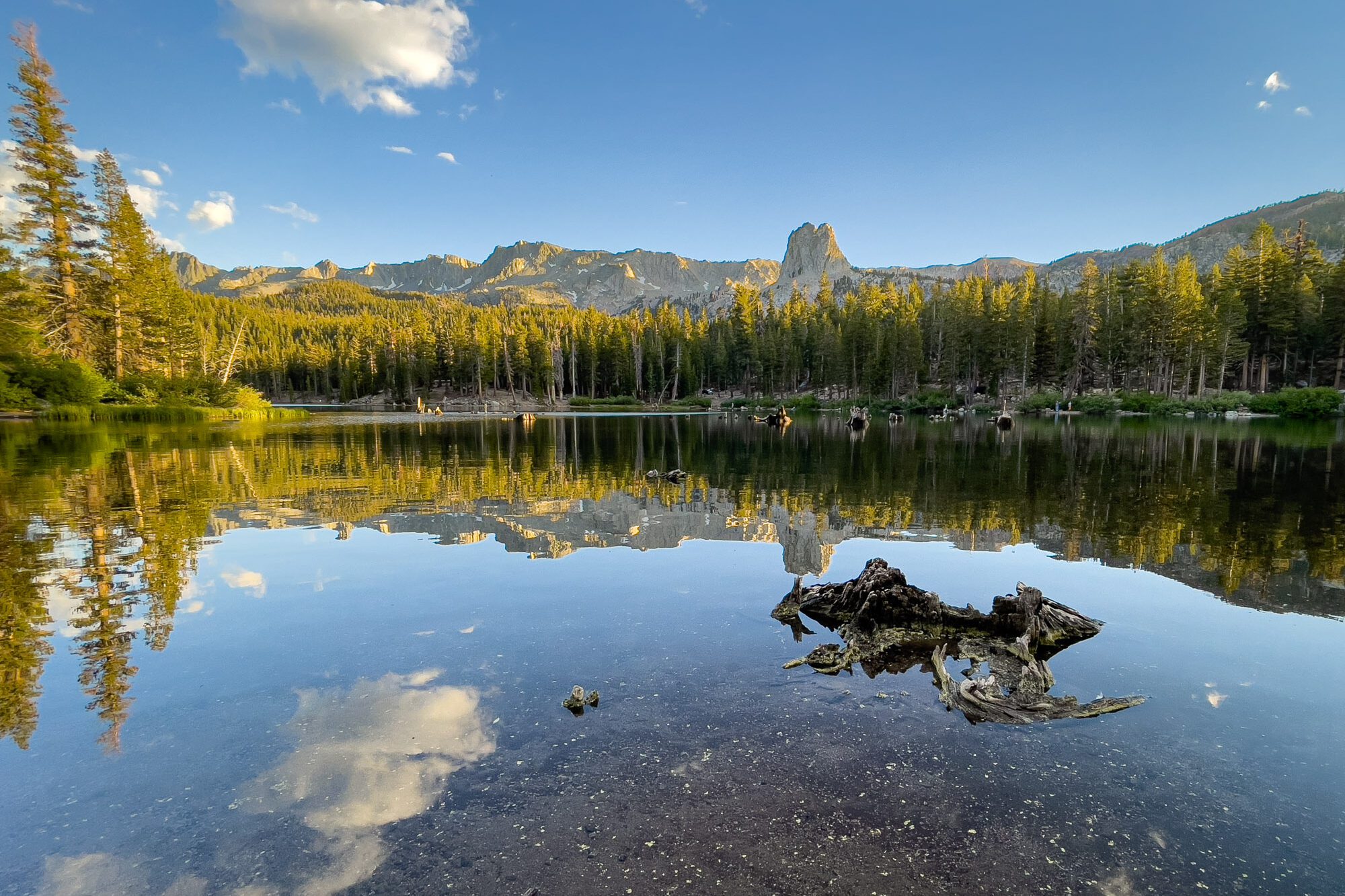
With five lakes in the Mammoth Lakes Basin itself, and hundreds more in the surrounding area, it would be a shame not to get out on the water. You can swim in many of the lakes in the basin, and several offer marinas where you can rent various watercraft. If you bring your own paddleboard, kayak, or canoe, you have even more options for getting out on the water.
The following five lakes are easily accessible by car or the handy free trolley.
- Twin Lakes: Twin Lakes is the first spot you will reach in the basin. The Twin Lakes General Store, in between the lakes, rents canoes, kayaks, and rowboats for $20 an hour and also offers a fish cleaning station. Further up, the Tamarack Lodge also rents fishing boats, kayaks, canoes, rowboats, and standup paddleboards and has a boat launch facility.
- Lake Mary: There are two marinas with boat rentals and general stores. On the north shore, Pokonobe Resort and Marina rents pontoons ($195/295/495), motorboats ($60/80/100), kayaks, canoes, paddleboards, and fishing gear ($20/day) by the hour, half and full day. On the south shore, the Lake Mary Marina rents pontoons ($360-460/6 hours), motorboats ($100/6 hours), kayaks ($45-70/2 hours), canoes ($65/2 hours), and paddleboards ($45/2 hours).
- Lake Mamie: Located next to Lake Mary and the Twin Falls overlook, and beneath Lake George, rent rowboats by the hour, day, or week from the Wildyrie Lodge and Boat Rental.
- Lake George: Lake George may be small but big it’s big on views. Along its shores, the rustic Woods Lodge offers motorboat rentals and launch facilities.
- Horseshoe Lake: There are no rentals or marinas at Horseshoe Lake and motorboats are not allowed, but it’s a popular spot for paddleboarding, kayaking, swimming, and hanging out on the large sandy beach. The trolley and 5.3-mile Lakes Basin Path connecting the North Village ends here.
Rental Shops: Several shops in town also offer rentals.
- Footloose Sports: Offers paddleboard rentals ($60 for 4 hours, $80 for full day).
- Kittredge Sports: Offers rentals for float tubes ($40 to $65 a day) and fishing rods ($20 to $30 a day).
- Play Big Outdoors: Offers paddleboard rentals ($75 a day).
Mountain Biking in Mammoth Lakes
Mammoth Lakes is an epic mountain biking destination over the summer, with more than 200 miles of trails, from cross-country to downhill, spanning dirt, granite, and sand. Top trails include the 2.6-mile Mammoth Rock Trail, the 5.4-mile Mountain View Trail, and the 8-mile Lower Rock Creek Trail.
Mammoth Mountain also turns into a mountain bike park (Mammoth Mountain Bike Park) over the summer, with more than 80 miles of single track that can be accessed via lifts. The trails cater to all levels of mountain bikers and even include a discovery zone for beginners.
You can rent bikes (and e-bikes if you want an extra boost) from several shops around town, including at Mammoth Mountain, Footloose Sports, Get Outdoors 365, and ASO Mammoth.
Explore Mammoth Mountain
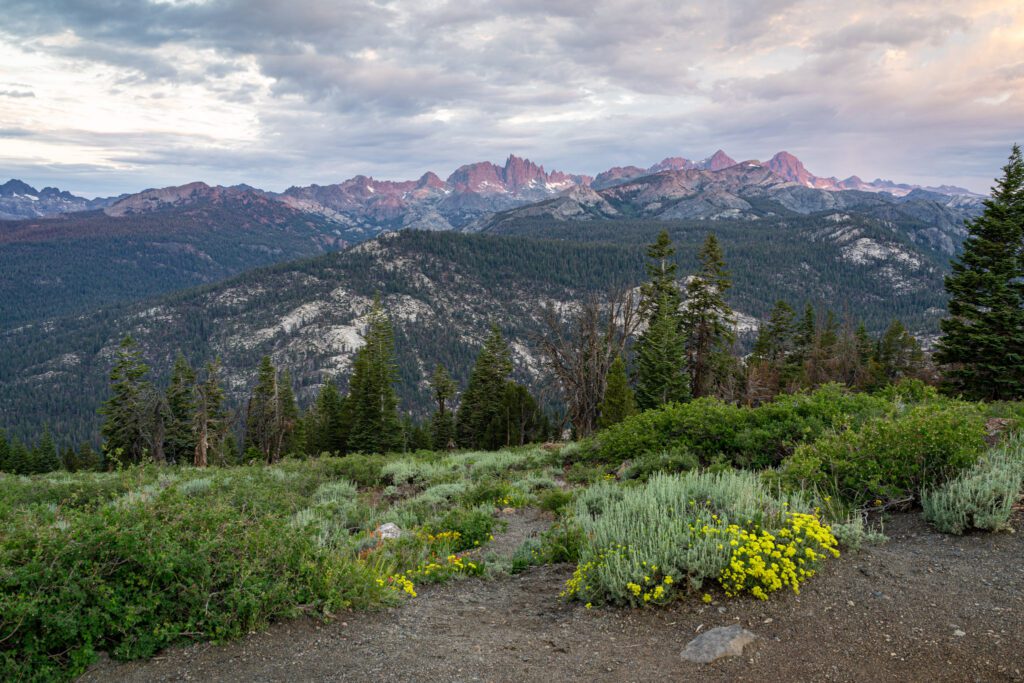
Even if you don’t mountain bike, you can still enjoy fun activities on Mammoth Mountain.
Go sightseeing and take the gondola ride for incredible views from the top at 11,053 feet. There’s a café and restaurant up top. There’s also an adventure center for kids and adults, complete with ropes courses, climbing wall, zip lines, bungee trampoline, and more.
You can also take the gondola up and hike down. Or try the Via Ferrata, where you traverse a network of climbing routes using steel cables, iron rungs, and suspension bridges that are fixed to the rock, and where you are roped in for safety. There are several routes that cater for all ability levels.
Mammoth Scenic Loop

This 16-mile scenic loop, which you can drive, or bike, is an easy way to take in the local sights. It also offers a few opportunities for quick and easy hikes. The loop starts just north of downtown, off Highway 203 and will take you past beautiful pine forests. Around 10 miles in, continue on to Dry Creek Road.
Be sure to stop at the Inyo Craters. Earthquake Fault, around 1 mile west of the loop is also worth a stop. You’ll also pass by the trailheads to several hikes, including Obsidian Dome and Lookout Mountain.
Rock Climbing in Mammoth Lakes
Rock climbers have plenty of options around Mammoth Lakes, with more than 1,400 routes, including bouldering, sport, trad, and alpine routes on volcanic tuff and granite.
The climbing season is largely from the late spring through the fall, though some bouldering can be done year-round.
Warming Wall is the closest to town and offers short bolted sports routes. The Lakes Basin also offers more than 100 routes, including easy routes near Horseshoe Lake and more challenging routes on granite at Crystal Crag above Crystal Lake. Further away, Clark Canyon offers more than 100 routes.
Golfing in Mammoth Lakes
Golfers can choose from two public golf courses near Mammoth Lakes. Designed by Cal Olsen, the Sierra Star Golf Course is the highest elevation championship 18-hole golf course in California, and sits at 8,000 feet.
Located at the base of the Sherwin Range, and designed by Ted Robinson, the Snowcreek Golf Course is a more rugged and exposed 9-hole course. Both offer fantastic views of the surrounding landscape.
Take one of the Great Day Trips from Mammoth Lakes
There’s plenty to do in Mammoth Lakes itself to keep you occupied for your entire trip, but if you have some extra time and you want a change of scenery, there are also some fantastic day trips nearby that you can take. You can even combine several stops in one day since they are all quite close to Mammoth Lakes. Here are a few top picks.
Hot Creek Geological Site

Drive Time from Mammoth Lakes: 9.5 miles / 15 minutes
Visit the Hot Creek Geologic Site to see volcanic and geothermal activity up close. There’s a boardwalk that winds through the canyon and surreal landscape of boiling hot springs, steaming vents, geysers, fumaroles, and shimmering pools of light blue and turquoise waters, all with the scenic backdrop of the towering Sierra Nevada peaks behind it.
Activity has increased in recent years so you just might see a geyser erupting. For that same reason, you can’t actually soak in any of the hot springs here, as the waters are just too hot. There are several hot springs nearby if you want to enjoy a soak. The site is accessible year round, though winter access may require snowmobile, snowshoe, or skis.
Hot Springs near Mammoth Lakes

Drive Time from Mammoth Lakes: 15 miles / 20 minutes
Near Hot Creek Geologic Site are several natural hot springs that you can actually soak in. All are located off of Whitmore Tubs Road or Benton Crossing Road. You’ll be driving on dirt roads, so a 4WD with decent clearance is recommended.
These hot springs are popular, so you’re unlikely to be alone. They’re also clothing optional, and have limited facilities to change if you would rather not go au naturel. Always check water temperatures before entering.
Wild Willy’s Hot Springs: Located off Benton Crossing Road, Wild Willy’s hot springs is one of the most popular hot springs in the area, it’s also known as Crowley Hot Springs. There are several pools available, including a heart-shaped one. The water here isn’t pumped in so it can get muddy, but the views of the mountains more than make up for it. It also has more of a party atmosphere, so expect company. Not far from Wild Willy’s is Hilltop Hot Springs. Despite the name, you don’t actually have to climb a hill. It’s a piped in pool with a shut-off valve to control the temperature.
Crab Cooker Hot Springs: Located off Whitmore Tubs Road, you can guess by the name that this hot spring can get pretty hot. Luckily, there’s a shut-off valve so you can adjust the temperature. The single tub can fit around six people, and offers fantastic views.
Nearby is Shepherd Hot Springs, which you can actually walk to from Crab Cooker. It’s a single pool with a shut-off valve nearby to adjust the temperature.
Also nearby is Rock Tub Hot Springs. It’s a small tub that can only fit a few people, with a shut-off valve to control the temperature. It’s right next to the parking area, so it’s one of the more popular hot springs.
Convict Lake
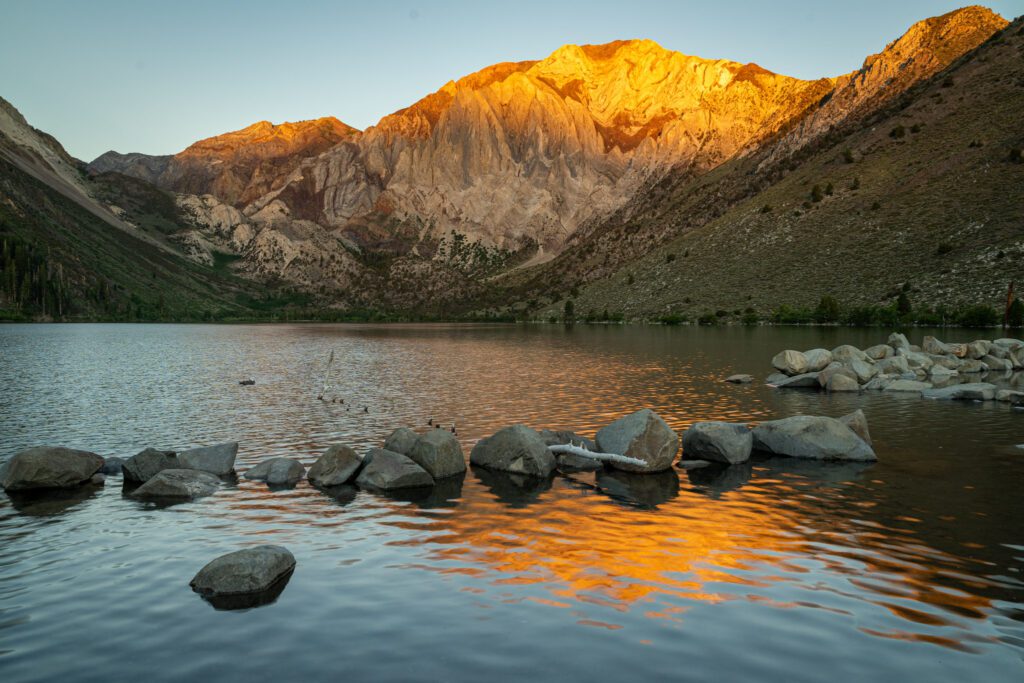
Drive Time from Mammoth Lakes: 10 miles / 15 minutes
With clear and deep blue waters framed by Mount Morrison and Laurel Mountain, Convict Lake is one of the prettiest lakes around, which is saying a lot in an area full of beautiful lakes. It’s also super accessible, as you can drive right up to the lake, just 2 miles off Highway 395. The lake was named after a shootout that occurred here between escaped convicts from Carson City and the posse that was sent after them, which resulted in the deaths of two locals.
There’s an easy 3-mile trail that goes around the lake that passes through the surrounding landscape of sagebrush, pine, and aspens. It’s particularly beautiful in the fall. A seasonal marina (April to October) offers rentals for kayaks, paddleboards, motorboats, and pontoon boats. The lake is also stocked with brown and rainbow trout, with spring and fall the best seasons for fishing.
Aseasonal forest service campground (open April to October) offers 85 sites (with bathroom, showers, and picnic tables, but no hookups). The Convict Lake Resort is open year round and offers cabins and lodges, a small store, food truck, and restaurant (open for dinner).
June Lake

Drive Time from Mammoth Lakes: 20 miles / 25 minutes
The June Lake area is a popular destination for hiking, biking, fishing, water sports, and in the winter, skiing and snowboarding at June Mountain. The fall colors here can be spectacular, and easily seen along the scenic June Lake Loop drive.
June Lake Loop: The June Lake Loop on Highway 158 is a beautiful drive, particularly in the fall when the aspens turn to gold. The 16-mile loop takes you past four pretty alpine lakes, and offers fantastic mountain views. Head north from Mammoth Lakes and you’ll reach the southern end of the loop after 14 miles. Turn into the loop and be sure to stop just past the gas station at the start to take in the view of the road leading into the mountains.
Pro tip: for the best photo, run across to the other side of the road.
You’ll pass by June Lake first, which has a nice beach that is popular in the summer. The town of June Lake is next. It’s a good spot for coffee (at The Lift) or a beer at June Lake Brewing Company.
Next up is small Gull Lake, with an easy nature trail around it, then Silver Lake, with great views of Carson Peak. Finally, you’ll pass by Grant Lake, the largest lake in the area and a good spot for fishing.
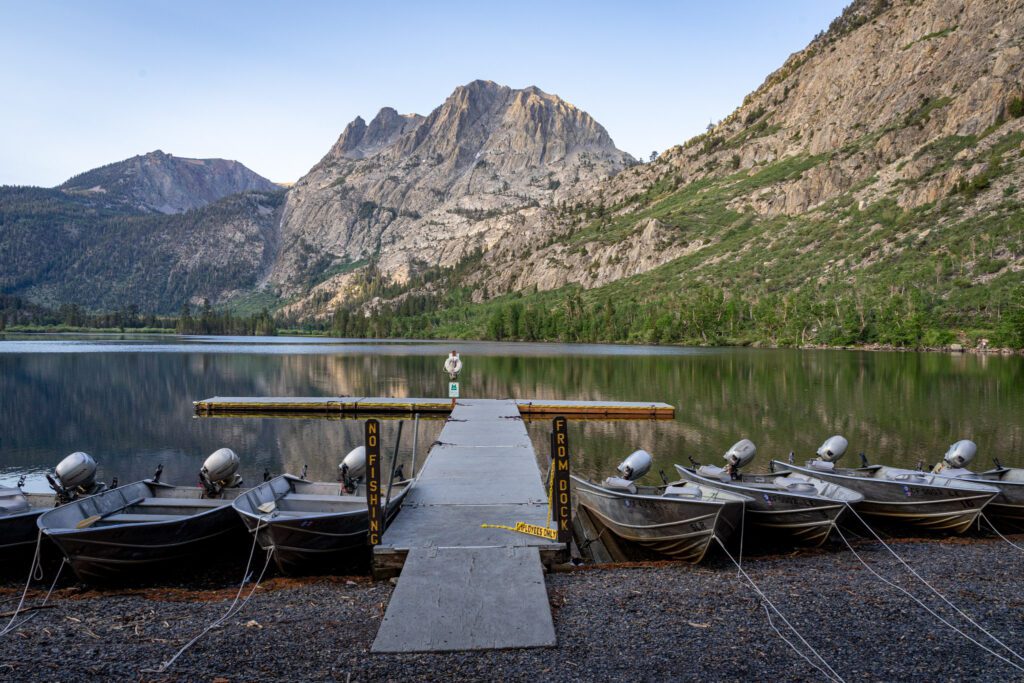
There are some great hikes along the June Lake Loop. Here are three of the best.
- Parker Lake: This easy 3.8-mile out and back hike with a 500-foot elevation gain takes you to pretty Parker Lake at the base of Parker Peak. From the trailhead, you’ll start heading upwards right away. At the crest, turn around to enjoy views of Mono Lake in the distance. In the summer, wildflowers are abundant along the creek, while aspens are colorful in the fall. There’s also great fishing here. The trail is largely exposed.
- Fern Lake: This moderate 3.2 mile out-and-back hike has a steady uphill climb up around 1,500 feet. Find the trailhead past Gull Lake. Around 1 mile in is a split in trail—go left for Yost Lake and Fern Creek and right for Fern Lake. There’s a beach at Fern Lake and you can jump in, but be aware that the water will be quite cold. You can also fish for trout in Fern Lake.
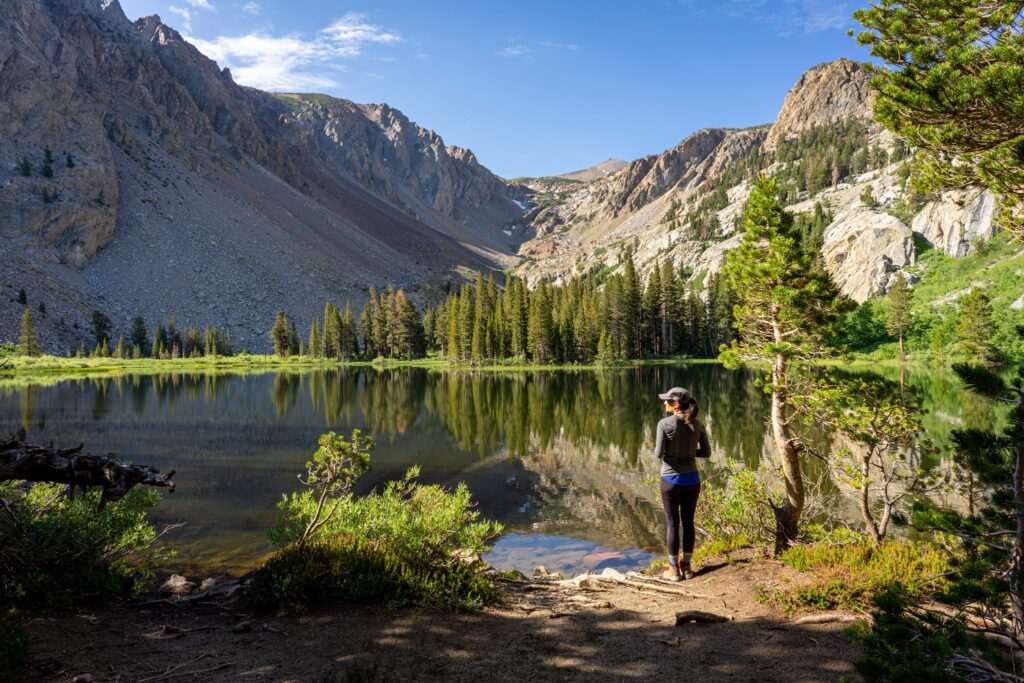
- Gem Lake: This moderately difficult 6.5-mile out and back hike gains around 2,000 in elevation. Find the trailhead near Silver Lake. As you hike, you’ll enjoy great views of Silver Lake and Horsetail Falls, the tallest waterfall in the area. After crossing some railway tracks, you’ll come to Lake Agnew. Continue climbing up numerous switchbacks to reach Gem Lake, with a beach on the western end. Be careful with creek crossings in the late spring and summer.
Mono Lake
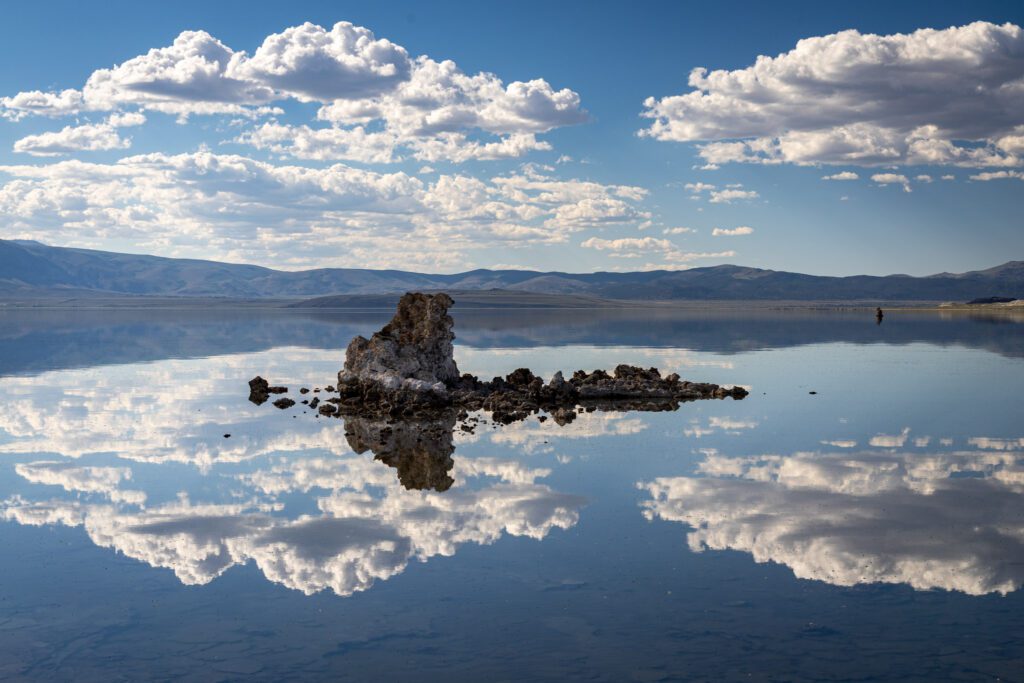
Drive Time from Mammoth Lakes: 35 miles / 40 minutes
The second oldest lake in North America, Mono Lake is an ancient saline lake that is more than twice as salty as the ocean and incredibly alkaline. It’s a unique and surreal landscape of twisted tufa towers (of calcium carbonate).
The reflections of the Sierra Nevada mountains in its still water are also spectacular. It’s a haven for alkali flies, brine shrimp, and numerous migratory birds, including ospreys that nest on the tufa towers. The area is particularly scenic at sunrise and sunset, and a big draw for photographers and bird watchers.
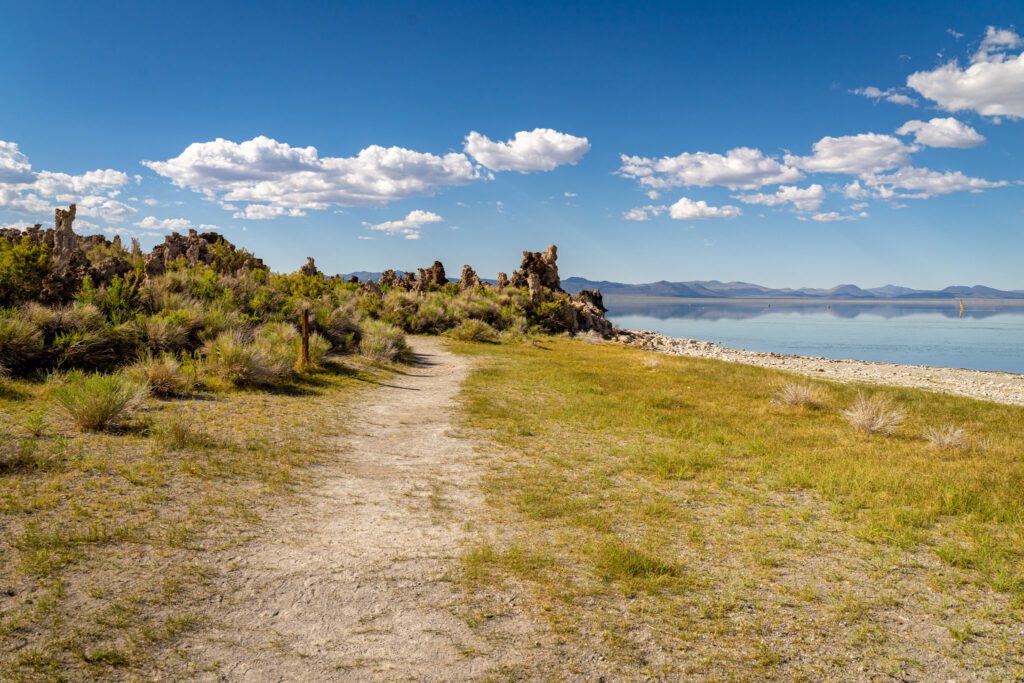
Head to the South Tufa area to see the largest concentration of tufa towers.
There’s an easy 1-mile self-guided nature trail that goes around. Visit the Mono Basin Scenic Area Ranger Station and Visitor Center (just north of Lee Vining) to learn more about the lake itself, and for guided tours of the area over the summer.
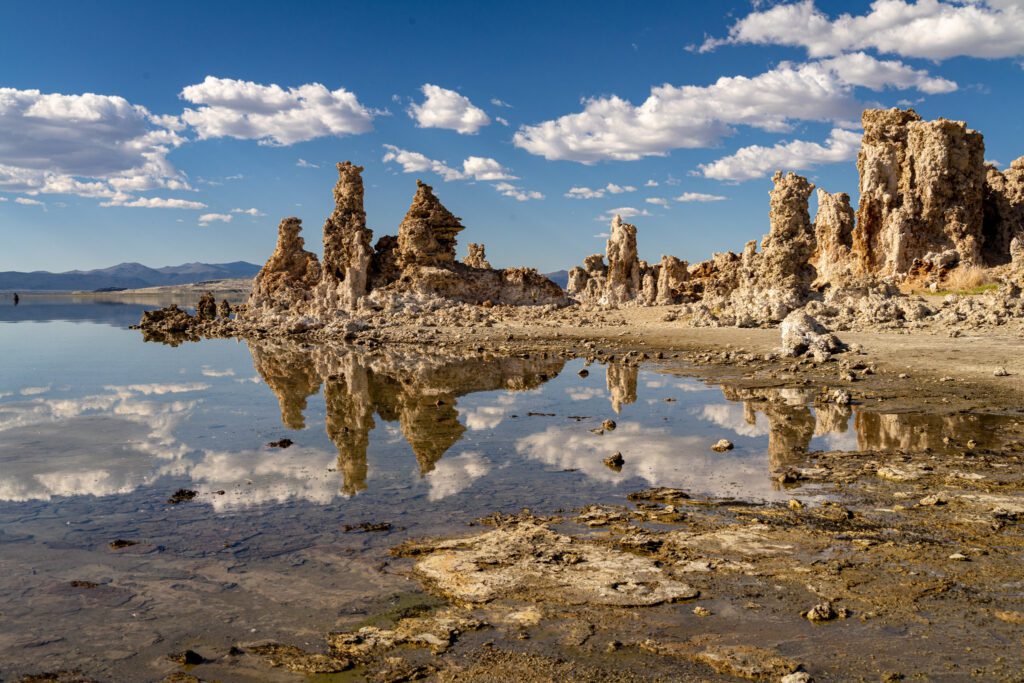
Nearby Navy Beach is the best spot for swimming and for putting in canoes and kayaks. The parking lot for the south tufas are located 5 miles east of Highway 395, off Highway 120.
You can also explore a crater while at Mono Lake. Nearby Panum Crater is the youngest of a string of craters that lead towards Mammoth Mountain. A short 30-minute trail leads you around the rim of the crater, while a short and steep trail leads you to the crater’s core.
Lee Vining/Tioga Road (Yosemite National Park)

Drive Time from Mammoth Lakes: 30 miles / 30 minutes (to Lee Vining); 50 miles / 1 hour (to Tuolumne Meadows)
The eastern side of Yosemite National Park is within an hour of Mammoth Lakes, making for an easy day trip. Stop at the small gateway town of Lee Vining first for a bite at the Whoa Nellie Deli, then continue on to Tioga Road.
- Whoa Nellie Deli: There’s a reason for all the rave reviews. Whoa Nellie Deli offers the best food you will ever find at a gas station. Their fish tacos are amazing, and portion sizes are large and filling. Grab a bite (you can order online in advance too), and sit outside on their picnic tables. There’s also a nice overlook towards Mono Lake.
- Tioga Road: Tioga Road (Highway 120) is the eastern entrance to Yosemite National Park, and offers a stunning drive through the Yosemite high country. Highlights along the way include Ellery Lake, Tioga Lake, Pothole Dome, Tuolumne Meadows, Lembert Dome, Tenaya Lake, and Olmstead Point. From Lee Vining, the Tioga Pass entrance to Yosemite National Park is about 12 miles along Tioga Road. From the entrance, it’s another 60 miles to Yosemite Valley. If you want to just see the highlights along Tioga Road, expect to drive 30 miles to Olmsted Point and 20 miles to Tuolumne Meadows from Lee Vining. Tioga Road is only open from around May to October, depending on the weather. To check on the latest road conditions, call (209) 372-0200.
If you have more time, check out this guide on 2 Days in Yosemite.
Eating and Drinking in Mammoth Lakes
Despite its small size, Mammoth Lakes has quite a good selection of places to eat, drink, and be merry. Here are some of my favorite places.
- Mammoth Brewing Company: One of the best places to grab a local beer, they offer more than a dozen craft brews on tap, including a rotating selection of seasonal options. Tasting flights are an easy way to sample different flavors. Sit outside on a picnic table and maybe play some cornhole. The food here is also good, and includes pizzas, burgers, sandwiches, and salads.
- Shelter Distilling: Located in Mammoth Village, they distill their own spirits, including vodka, gin, rum, and whiskey, which you can enjoy in a large selection of cocktails. Beers and ciders are also available, as are a good selection of small plates, sandwiches, burgers, and pizzas. Sit at the bar, or the back patio when the weather is nice.
- Black Velvet Coffee: The best spot in town for third wave coffee, Black Velvet serves artisanal and organic, fair trade, and rainforest alliance coffees, with all roasting done onsite. Get the cinnamon sugar waffle. They also offer a wine bar with a focus on sustainable and biodynamic wines from small, often California winegrowers.
- Stellar Brew: This coffee shop is a local favorite for healthy breakfasts and grab and go items that include vegan and gluten free options. They’re most well known for their breakfast burritos and their bowls, but also offer smoothies, wraps, sandwiches, salads, muffins, and more.
- Mammoth Tavern: It’s a bit hard to find, but Mammoth Tavern is a solid option for good comfort food and a wide selection of craft beers, inventive cocktails, and wines. The atmosphere is lively and fun, and they offer a fantastic happy hour and fantastic mountain views.
- Lakefront Restaurant: If you’re looking for fine dining with a view, look no further than Lakefront Restaurant, inside the Tamarack Lodge by Twin Lakes. It’s pricey, but worth the splurge as the food is really good with a menu that changes seasonally. There are only a few tables, so reservations are a must.
- Shea Schat’s Bakery: Shea was married to Erick of the well-known Erick Schat’s Bakery in Bishop, and has carried on the tradition of their famous sheepherders bread here. You can also get sandwiches and a wide selection of pastries and baked goods. Lines can get long and they close the counter at 3:00 pm.
- Mammoth Rock ‘n’ Bowl: Take a break from the outdoors and enjoy some good old fashioned fun. This modern entertainment space includes 12 bowling lanes, golf simulator, arcade games, foosball, darts, and ping pong. Outside, enjoy bocce ball and horseshoes in season. There are also two bars, with a live DJ. And upstairs, the Mammoth Rock Brasserie offers surprisingly good and upscale French inspired food.
Where to Stay in Mammoth Lakes
Whether you plan to camp (which I recommend) or prefer more amenities that a hotel and resort can offer, Mammoth Lakes offers plenty of options.
Hotels and Resorts in Mammoth
Tamarack Lodge: This historic lodge with rustic mountain décor is located along the shores of Twin Lakes, and just over a mile from downtown Mammoth Lakes. Choose from rooms in the main lodge with shared or private baths and studio to 3-bedroom pet-friendly cabins with kitchens and fireplaces. A summer activity center offers bike and boat rentals and guided tours. Amenities include a restaurant, bar, lounge and access to an off-site pool, hot tub, and fitness center, free WiFi and shuttle to town.
Village Lodge: Located in the heart of the village, right by Mammoth Mountain, these modern studio to 3-bedroom condos offer a luxurious stay with spacious living areas, deluxe bathrooms, gourmet kitchens or kitchenettes, fireplaces, and balconies with views. Enjoy direct access to the gondola, along with a heated outdoor pool and multiple hot tubs and gyms, fire pits, game room, childcare, and in-room dining from village restaurants, along with free WiFi and electric car charging stations.
Alpenhof Lodge: This charming family-owned European-style chalet lodge is located right across from the Village, and offers spacious and renovated rooms, suites, and cabins with private bathrooms, mini fridge, modern amenities, and some with fireplaces. Amenities include a pool, Jacuzzi, and free WiFi. There are also two restaurants on-site, including the popular Clocktower Cellar, with pool table, foosball tables, and an extensive whiskey and beer selection.
Mammoth Creek Inn: Located just minutes from Mammoth Mountain, this family friendly inn offers 25 basic but comfortable options from standard rooms to lofts and suites, some of which include kitchens, fireplaces, and decks with fantastic views. The inn is pet friendly and includes a spacious fireplace lounge, indoor spa and fitness center, billiards room, and free shuttle service to Mammoth-Yosemite Airport.
Camping in Mammoth Lakes

Camping is a fantastic way to experience Lake Mammoth. There are more than a dozen campgrounds in the Mammoth Lakes area, with sites for tents and RVs (no hookups). The following campgrounds are the best options.
Lake Mary Campground: This fantastic campground is located on the north end of Lake Mary, the largest and most developed on the 11 lakes in the region. There are 48 sites, which can be reserved in advance. The best sites have views of Lake Mary, which offers two marinas, boat rentals, and excellent fishing. Swimming is not allowed. Amenities include picnic tables, fire grills, bear boxes, potable water, and flush toilets. Open from early June to mid September.
Lake George Campground: One of the smaller campgrounds in the area, there are only 15 FCFS sites here, which enjoy filtered views of pretty Lake George and towering Crystal Crag. Swimming is not allowed, though small boats can be rented at Woods Lodge. Amenities include picnic tables, fire grills, bear boxes, potable water, and flush toilets. Nearby is a grocery store, showers, and laundry. Open from June to mid September.
Twin Lakes Campground: Located between the eastern and western shores of Twin Lakes, this large and popular campground offers 92 sites that can be reserved in advance. Amenities include picnic tables, fire grills, bear boxes, potable water, flush toilets, hot showers, boat ramp, and fishing pier. A general store is within walking distance. Open from mid May to late October.
Minaret Falls Campground: This scenic and popular campground is located along the Upper San Joaquin River, near Minaret Creek and Minaret Falls. Devils Postpile National Monument is less than 1 mile away. There are 27 FCFS sites. Amenities include picnic tables, fire grills, bear boxes, potable water, and vault toilets. There are limited supplies at the Reds Meadow Resort store nearby. Open from mid June to mid September. If you stay here, you can drive your car to Red Meadows/Devils Postpile.
When to Visit Mammoth Lakes?
Although this guide primarily covers activities in Mammoth Lakes in the summer, Mammoth Lakes offers a wide range of fun activities year-round. The best time to visit will depend on what activities you’re looking to do.
- Summer is prime time for camping, hiking, and water activities. Nearly all the area trails and campgrounds should be open (especially later in the summer), and getting into and on the water will be especially pleasant. Summer is also the most popular season in Mammoth Lakes, and weekends in particular can be very crowded, so you’ll want to book your accommodations ahead of time, and expect high prices. If you’re camping, be sure to arrive early if you’re staying at a FCFS campground.
- Fall is a fantastic time to visit, especially if you want to escape the crowds but still enjoy many outdoor activities. The weather is still pleasant for camping, hiking, and even some water sports, with smaller crowds and lower prices. The area, with its many aspens, also offers fantastic fall colors. Early October is usually your best bet for leaf peeping, though the season can run from late September to late October, and depends on the elevation. Check the Mono County fall colors website for the best timing. Definitely take a day trip out to Convict Lake and June Lake if you’re visiting in the fall.
- Winter is all about snow sports. Mammoth has one of the longest ski seasons in the region, which sometimes extends into June (or even August one year). Mammoth Mountain is the main draw, with more than 3,500 acres of terrain. June Mountain nearby, is another good option for downhill skiing and snowboarding. Other options include cross-country skiing, sledding, snowmobiling, and skating. Winter is the second most popular season, so you’ll also want to book your accommodations ahead of time and expect higher prices.
- Spring, depending on the winter before and the level of the snowpack, may still be largely about snow sports, with limited options for camping, hiking, mountain biking, and climbing. Late spring would be your best bet for those activities. Spring is also a good time to look for wildflowers, see waterfalls at their fullest, and to go fishing.
How to Get to Mammoth Lakes
To get to Mammoth Lakes, your best options are to fly to either Los Angeles or Reno/Tahoe and then drive.
During peak summer and winter season, you can also fly directly to Mammoth Lakes or Bishop.
From Los Angeles
To start your trip, you can fly into Los Angeles International Airport (LAX) or Hollywood Burbank Airport (BUR). LAX is the largest airport on the west coast, and will have the most options from just about anywhere in the country. BUR is a much nicer airport to fly into, but it’s a lot smaller, so finding flights at a reasonable price can be an issue.
Once in Los Angeles, pick up a rental car and drive north to Mammoth Lakes, around 300 miles and 5 hours if you drive straight. Take highway 5 to 14 to 395. If you have the time, there are some fantastic stops along Highway 395, which we list out in more detail in our guide on the perfect Los Angeles to Lake Tahoe road trip on Highway 395.
From Reno/Tahoe
You can also fly into Reno International Airport (RNO).
It’s a small airport and a breeze to get in and out. It’s located about 45 minutes from the North Shore of Lake Tahoe and about 1 hour from the South Shore. You can pick up a rental car at RNO inside the terminal and drive south on highway 580 to 395.
It’s around 165 miles and 3 hours to Mammoth Lakes from RNO. You can also take a bus from Reno Airport to Mammoth Lakes.
From Elsewhere
If you don’t want to drive long distances, you can also fly in or out of Mammoth Yosemite Airport (MMH), located just 10 minutes away from Mammoth Lakes, or Eastern Sierra Regional Airport (BIH) in Bishop.
Both airports only offer flights during peak summer and winter seasons, with limited flight options (semi private charters from Southern California for MMH and San Francisco via United for BIH).
You can take the Mammoth Express from Bishop Airport to Mammoth Lakes.
Getting Around in Mammoth Lakes
While a car will be the easiest way to get around, especially if you want to explore the area or go on some day trips, Mammoth Lakes actually offers a good network of public transportation around town and the Lakes Basin. There’s even a bus that will take you to Yosemite National Park!
The Mammoth Lake Basin Trolley is a free summer bus service that takes you around the Lakes Basin. It starts from the Village, and goes up to Lake Mary Road and the Twin Lakes Loop, ending at Horseshoe Lake.
The service runs from 9:00 am to 6:00 pm daily. On weekends and holidays, from 12:00 pm to 6:00 pm, each trolley also features a costumed entertainer who will provide music, storytelling, or other entertainment as you ride.
A Mammoth Town Trolley also runs over the summer, while the Purple Line Bus runs year-round and goes from Vons Supermarket to the Village. Several lines and trolleys also run over the winter.
There is also a Bike Park Shuttle that runs over the summer from the Village to the Adventure Center at the Main Lodge at Mammoth Mountain. It’s a free shuttle to ride, though a Mountain Bike Park ticket is required to transport your bike.
You Might Also Like
- HIGHWAY 395: How to Plan an Epic Highway 395 Road Trip (L.A. to Lake Tahoe)
- MAMMOTH LAKES: 9 Stunning Hikes in Mammoth Lakes to Add to Your Hiking Bucket List
- MAMMOTH LAKES: Hiking the Outrageously Beautiful Duck Pass Trail
- LAKE TAHOE: The Best Things to Do in Lake Tahoe in the Summer
- LAKE TAHOE: 15 Stunning Hikes Near Lake Tahoe
- LAKE TAHOE: How to Spend 3 Amazing Days in Lake Tahoe
- DEATH VALLEY: How to Plan an Amazing Death Valley Itinerary
- YOSEMITE: A Picture-Perfect 2 Day Yosemite Itinerary

Plan an Unforgettable California Adventure
Heading to California? We’ve got all sorts of super detailed, in-depth California travel guides written by locals to help you plan an amazing trip.
- San Francisco: We’ve got a guide to spending 3 days in SF, one day in San Francisco for planning a shorter trip, and a complete guide to finding the perfect place to stay in San Francisco. We also have guides to 14 perfect weekend getaways from San Francisco and the best day trips in the Bay Area. Oh, we almost forgot, here are the 15 best hikes near San Francisco, written by two Bay Area locals.
- Los Angeles: Read our perfect 2 Day L.A. itinerary, our guide to spending one amazing day in L.A. (with two versions!), and a guide to helping you figure out where to stay.
- San Diego: Learn how to spend a day in San Diego, a weekend in San Diego, and where you should stay.
- Lake Tahoe: Plan the perfect summertime adventure with our 3 day Tahoe itinerary, guide to the best hikes, and our guide to the best things to do in Tahoe.
- Santa Barbara: We have a guide to planning a weekend in Santa Barbara, and a guide to a day trip to Santa Barbara from Los Angeles if you’re pressed for time.
- Mammoth Lakes: To plan a perfect getaway in the Eastern Sierra, read our guide to the best things to do in Mammoth Lakes in the summer. Plus, our guide to the best hikes in Mammoth, featuring the epic climb to the top of Duck Pass.
- Big Sur: Plan the perfect weekend away with our complete Big Sur itinerary.
- Yosemite National Park: Plan an amazing trip with our guide to planning an amazing Yosemite itinerary, and our guide to choosing where to stay at Yosemite.
- Joshua Tree National Park: Plan the perfect trip with our perfect weekend itinerary (or a day trip, if you have less time), a guide to the best hikes, and some cool places to stay in Joshua Tree.
- Death Valley National Park: We have a SUPER detailed guide to planning the perfect Death Valley itinerary, and a guide to the best hikes in Death Valley National Park.
- California Road Trips: See the best of the Pacific Coast Highway on our San Francisco to San Diego road trip, or make the trip up Highway from on a Los Angeles to SanFrancisco road trip. If you’re more into mountains than beaches, a Highway 395 road trip from Los Angeles to Lake Tahoe might be more your speed.



